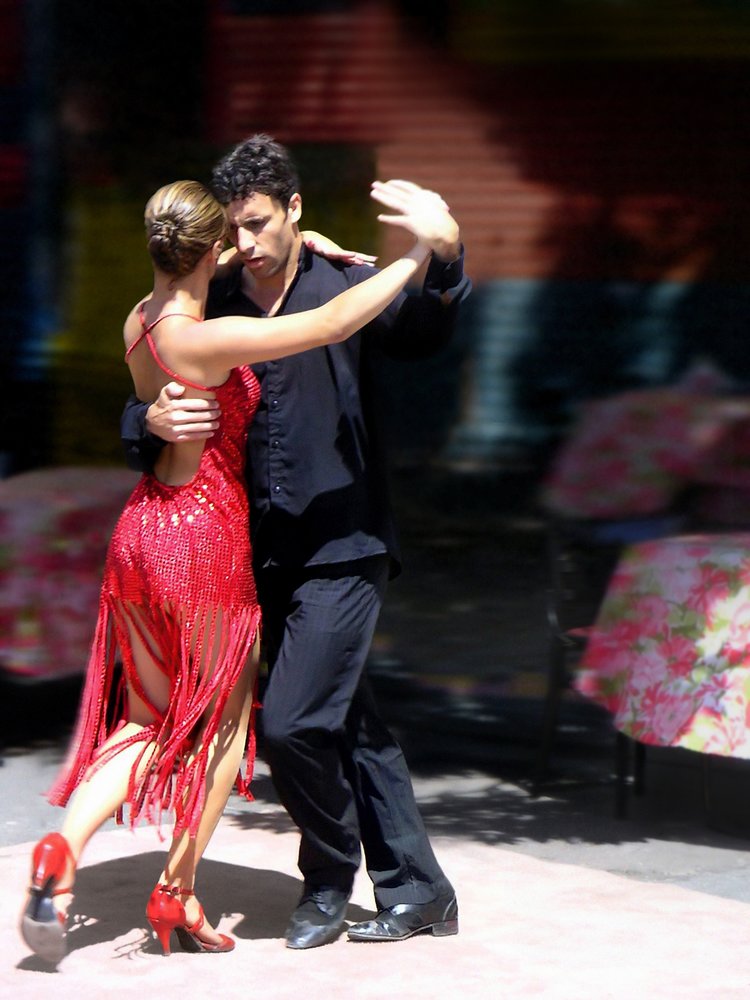
BY MAYA AVERBUCH
Before I left for Argentina, my parents joked that I would meet some “nice” boy at a milonga and never come back. I laughed and shook my head but hey, finding myself an Argentinian lover at a tango hall didn’t sound half bad. At the very least, despite my inability to move at all gracefully, taking a dance class in the country where tango was invented sounded like a must.
At my first class, a free one at the Casa Nacional del Bicentenario, the teacher told us that the true steps were simple: left, right, left, right, and so on. She waved a chastising hand at anyone who tried to perform figure eights or played with other fancy footwork. Tango, for her, was about discovering the rhythm of the song in unison with your partner. For the ladies, that meant feeling slight pressure at the small of their backs and letting their feet follow (at the end of our classes, my friend wrote a thesis paper about queer tango, which tries to break such strong gender roles, but in the cramped corner of the room, I was not about to complain about not having to give directions). I moved rigidly, mortified every time I nearly scuffed the white pointed shoes of my clean-cut partner, a random university student. With my eyes on my feet the whole evening, I nodded obediently every time he told me to take little steps, little steps, no, no, littler ones.
At another class, this time at La Viruta, an evening tango ballroom, the students from my study abroad program arrived, making it a ratio of two girls to each guy. We giggled and managed, under the divine direction of our soon-to-be-on-Broadway dance instructor, to get a handful of opportunities to practice the eight assigned steps. By the time we went downstairs to the main space, in which hosts of more experienced dancers were taking their own classes, we had gotten in a few clumsily executed spins and felt mildly successful. But when the lights dimmed for the 10-minute instructor-led exhibition dance, we realized how juvenile our own attempts were. The four couples appeared to glide across the floor. Their feet seemed to have lives of their own as they jittered around and pointed every which way, legs twining and untwining in the blink of an eye. I wondered, for a moment, how far tango had come from its nascent days in the brothels; how similar was this to the supposedly sordid couple dances in the shadier regions of Buenos Aires? How classy would it be if, on my own nights out here, instead of watching friends get up close with strangers as the beats pounded at one of BA’s many night clubs—which, much to my shock, only start to fill up around 2 a.m. and do not close their doors until 6 a.m.—we all tangoed?

There’s a whole other side to tango that I can’t fail to mention: the music itself. Thanks to my father, who has loved tango music since someone gifted him a CD back in the 80s, I grew up listening to the sorrowful groans of the bandoneón, a complex cousin of the accordion, in Astor Piazzolla’s evocative instrumental pieces, and to the doleful crooning of the tango great Carlos Gardel. In Argentina, a tip off from the Yale Club led me to a concert of El Sexteto Mayor, a long-standing ensemble composed of a pianist, bassist, two violinists, and two bandoneonistas. The members of the crowd whooped and cried out, “¡Que barbaro!” how terrific, every time a well-known song was announced, while Rheaya and I leaned forward, excited to hear something totally new. The performers brought out a couple older male singers for some of the numbers, but I kept waiting for them to leave, so I could focus on the raw instrumental conversation instead of trying to understand the words of some overly romantic ballad.
A couple weeks later, when plans to go to a jazz club fell through, a couple friends and I landed up at Café Vinilo, where the owner up front waved us through a black curtain into a room with a bunch of tables clustered around a decently sized stage. When we arrived, two men faced each other in the center of the room, singing in almost a whisper while gently plucking their guitars, but they soon went back to prepare for the main attraction, La Orquesta Victoria. The orchestra, whose many musicians took up the whole stage, played classics, but with a raucous sound and infectious energy that made me want to whistle and applaud exuberantly at the end of every piece. With red lighting and a tinge of smoke in the onstage air, I lost myself in the music, looking from one performer to the next in amazement as they played on. Even when they finally made their way off the stage and the small round tables where people sat drinking fancy wines were shifted to the side to make way for couples that wanted to tango, the music filled my head. My friends and I sat off to the side, watching as our fellow audience members danced cheek to cheek with staggering intimacy, even those who changed partners frequently in the course of the evening. When they moved with their eyes closed, as though they were lost to the world, I almost sighed aloud, wishing never to leave the hidden room behind the black curtain, so I could remain trapped in what felt like one long, glorious dream.
Maya Averbuch ’16 is in Berkeley College. This summer she will be blogging from Argentina. You can contact her at maya.averbuch@yale.edu.